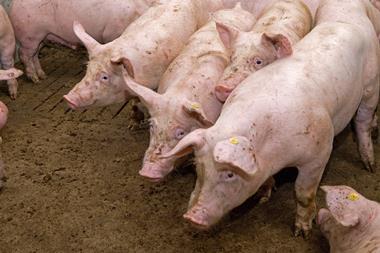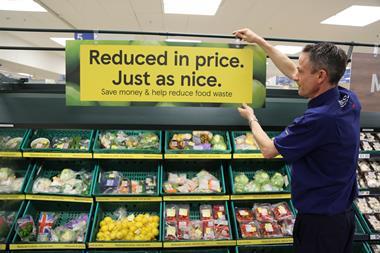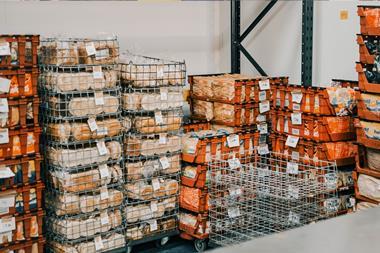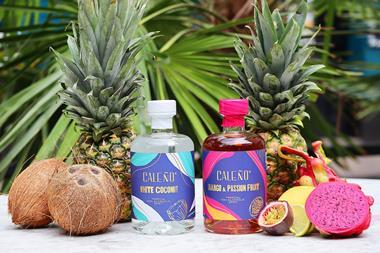
Food manufacturers aren’t doing enough to prepare for the online age – that’s the warning from Rabobank in its new report on online retailing this week .
The report looks at the rapidly changing online grocery landscape across Europe and sets out the sorts of areas suppliers should be paying much more attention to in the future.
If they don’t, they risk losing more and more power to retailers, Rabobank believes.
And the retailers certainly aren’t messing around when it comes to online. Just how seriously many of the major grocers are taking the opportunities – and challenges – from online retailing was brought home to us this week, when Tesco UK MD Chris Bush joined us as The Grocer’s guest editor. He provided us with some fascinating insights and comments on the growing importance of online, which you can read in The Grocer this weekend.
But in the meantime, what should food manufacturers be doing to better prepare themselves for online? I caught up with Rabobank analyst John David Roeg to discuss his report and picked out 10 key recommendations.
1. Consider tags and search terms when formulating products
Consumer interest in foods that fit in with specific diets and lifestyles – such as gluten free, low sugar or low salt – is expected to increase, and shoppers will use search filters on retailer websites to ensure only products that meet their requirements are shown. Products that aren’t formulated to fit in with those filters simply drop off the screen. “The right formulation will give suppliers a greater chance of staying visible,” says Roeg. “Manufacturers should consider reformulating existing products or launching new lifestyle products formulated specifically to fit in with these terms and filters.”
2. Be prepared to supply more packaging formats
In an online environment, there are more opportunities to tailor pack and portion sizes towards different demographics – eg. large families or single-person households. “We expect more demand for a wider range of packaging standards and packaging that is easy to be picked, including – eventually – by robots,” says Roeg.
Plus, retailers are likely to demand more retailer-specific pack sizes to help them differentiate their offering – and decrease their exposure to price comparisons, Roeg believes. “In theory, pricing is more transparent online, but retailer-specific sizes could help blur price competition.”
3. Allocate budget for online charges and listing fees
Fees for online services – such as banner advertisements and good positioning on retailer websites, ‘clustering’ of brands on screen or even the suppression of rival brands or substitute products from search results – will be a growing source of income for retailers. “Retailers – especially in the UK – are already asking for fees for such services,” says Roeg. “Listing fees are moving increasingly online, and manufacturers need to make sure they shift their budgets to reflect these changes.”
4. Invest in your own data analysis and tech know-how
Online retailing platforms are complex and the way they work can vary significantly from retailer to retailer. Suppliers can end up on the back foot in their negotiations with retailers if they don’t fully understand how core functionality, such as search, works on a particular retailer website, warns Roeg.
“They should really understand how retailers’ technologies work,” he says. “Retailers have more tech expertise at hand than food producers, but if you understand how the technology works and you invest in your own capabilities, you can take action.”
5. Wave goodbye to the category captain
A core part of how retailers organise their offerings in-store, the concept of the category captain doesn’t necessarily translate well into online, where consumers can personalise their own shopping experience using ‘favourites’ lists and other functions, believes Rabobank.
“The jury is out on whether online food retailers still need the same kind of service from category captains as they do in stores,” it says in its report. “In certain aspects, such as product and market knowledge, retailers can certainly use processors’ knowledge. But will they also need their services to organise their websites? Rabobank has its doubts here and knows at least one leading online retailer who does not need category captains because its screen views become more personal and personalised.”
6. Be alive to new opportunities
Some shopper behaviour differs significantly online as compared with in-store, and categories such as frozen foods – which can be awkward to shop for consumers concerned about foods defrosting – are “ideal categories to benefit from online,” says Roeg. In France, frozen food sales online are on average 50% higher than frozen food sales in hyper- and supermarkets, he adds.
Online also offers new opportunities for products with very short shelf lives, which would normally struggle to gain listings in supermarkets, adds Roeg, citing fresh salads and fresh meat products as examples. “If these are made to order – produced in the morning to be consumed in the evening – it’s suddenly much easier to manage issues like temperature control than if they were in store.”
7. But don’t jump to conclusions about online behaviour
This is especially worth bearing in mind when selling across a number of different countries, says Roeg. In the UK, for instance, wine is one of the categories that has done very well online, as British consumers have enjoyed the convenience of having bottles delivered to their homes.
In France, by contrast, “wine sales online are not doing as well as you’d expect,” says Roeg, because French shoppers like the experience of choosing individual wine bottles in store. Similarly, one might expect shoppers to be reluctant about shopping for fresh produce online – but that’s not necessarily the case, says Roeg. “Again, the French example is striking. With the exception of traditional products that you’d buy on a counter, fresh products are actually doing very well. People seem to have no problem buying apples or tomatoes online.”
8. Look beyond early adopters
Early adopters can colour the way online retailing is perceived by the trade, but it’s important not to assume that those consumers that are first to embrace online food shopping are those that will shape the online retail environment longer term, says Roeg.
In the UK, early adopters have tended to be older, more affluent consumers, whereas in France online shoppers tend to be younger, he adds. As online retailing is adopted more widely, the influence of these groups on online offerings is likely to wane.
9. Build relationships with the new breed of online retailers
As grocery sales shift increasingly online, the balance of power between big supermarkets and suppliers will initially shift towards the supermarkets, believes Roeg. But longer term, it could move back in favour of suppliers: competition among retailers will increase as the cost of building an online platform comes down and tech providers start to offer sophisticated ‘white label fulfilment platforms’ that will make it very easy for a range of players to move into online food sales.
“It’s a very logical move for non-food retailers to go into food once growth in non-food starts to decrease,” says Roeg. “There is no guarantee that it will just be the big four or the big supermarkets selling food – sooner or later, there will be more competition.” Suppliers that keep an eye out on potential new entrants and build strong relationships with them early on are likely to find themselves in a strong position.
10. Consider going it alone
Direct-to-consumer sales may have seemed a silly idea in a bricks-and-mortar era – the price of individual grocery items is typically so small that B2C sales are rarely worthwhile for manufacturers. But online, the dynamics are different, says Rabobank, citing Nestlé’s Nespresso and specialist suppliers selling fresh meat directly to customers.
“With the right products and marketing, there should be plenty of opportunities for food processors to circumvent the retailer.”



![XOXO-Product-Shot[ALL FLAVOUR]-Sky-1920x1080](https://dmrqkbkq8el9i.cloudfront.net/Pictures/274x183/4/9/2/355492_xoxoproductshotallflavoursky1920x1080_806584_crop.jpg)















No comments yet